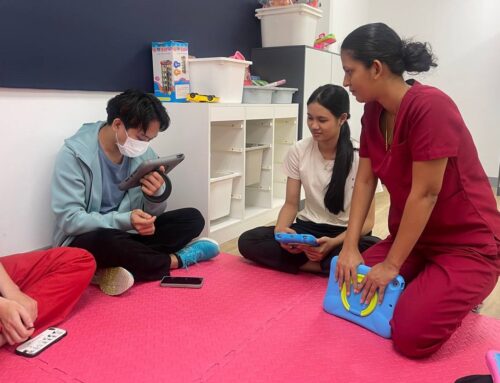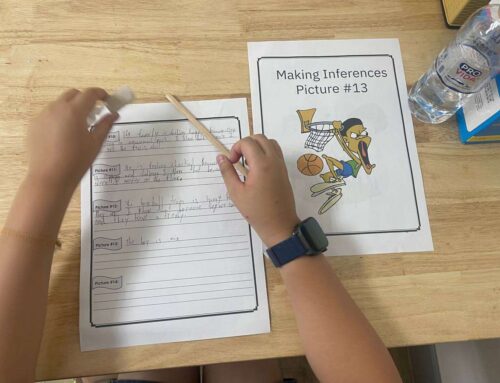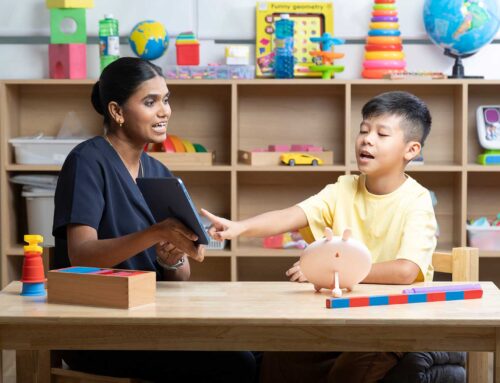Speech and language development plays a crucial role in a child’s academic success and social growth. In Cambodia, where inclusive education is growing rapidly, integrating speech goals into Individualized Education Programs (IEPs) and classroom routines ensures that children receive consistent, meaningful support. Schools in Phnom Penh and across the country can make a real difference by collaborating with speech-language pathologists (SLPs) to create communication-friendly classrooms that help every student thrive.
Understanding Speech Goals in IEPs
Speech goals within an IEP are designed to target specific communication skills a child needs to improve, such as articulation, expressive language, comprehension, or social communication. These goals should be measurable, realistic, and personalized to each child’s needs.
For instance, a goal might read: “The student will use complete sentences to describe pictures in 4 out of 5 opportunities.” Such structured targets give teachers, parents, and therapists a clear direction for support.
In Phnom Penh, schools that partner with centers like OrbRom Center benefit from professional assessments and speech-language evaluations that inform these goals. With tailored support, children can develop the communication skills they need to participate actively in classroom discussions and peer interactions.
The Importance of Collaboration Between Teachers and Speech Therapists
Integrating speech goals into classroom settings works best when teachers and speech therapists collaborate closely. Teachers spend the most time with students, making them essential partners in reinforcing communication strategies introduced in therapy.
At OrbRom Center, SLPs often work with educators to design activities that naturally embed speech and language practice into daily lessons. For example:
-
During reading time: Teachers can encourage students to retell stories or predict outcomes to build expressive language skills.
-
In group discussions: Structured turn-taking activities support social communication and pragmatic language.
-
Through visual aids: Posters and picture schedules can help children with limited verbal skills follow routines and express needs more effectively.
This teamwork approach ensures that therapy goals don’t stay confined to the therapy room—they become part of a child’s everyday learning environment.
Practical Strategies for Integrating Speech Goals in the Classroom
1. Use Visual and Verbal Cues
Many students benefit from visual supports such as flashcards, emotion charts, or communication boards. These tools, often introduced during speech therapy, can be used in class to reinforce comprehension and expressive language. For children with speech delays or autism, visuals promote independence and confidence when communicating with peers.
2. Embed Speech Practice into Daily Routines
Speech practice doesn’t need to be separate from learning. During math lessons, teachers can encourage children to explain their answers verbally. In science, students can describe observations using complete sentences. Embedding speech into everyday subjects helps children generalize skills from therapy to real-life situations.
3. Promote Peer Interaction
Group projects, role-playing, and storytelling sessions encourage communication among classmates. These peer-based activities align with IEP speech goals focused on social communication, turn-taking, and listening comprehension.
4. Provide Consistent Feedback
When teachers use consistent feedback and modeling—like repeating a child’s sentence correctly or expanding on what they say—it strengthens their learning. For example, if a child says “Dog run,” the teacher might respond, “Yes, the dog is running fast.” Such natural corrections improve grammar and sentence structure over time.
For more classroom techniques and home strategies, explore OrbRom’s guide: Speech Therapy Techniques and Exercises.
Supporting Speech Goals Beyond the Classroom
Parents also play a vital role in reinforcing speech goals. Schools can encourage families to collaborate by sharing progress reports and home-based activities that mirror classroom strategies. A simple way to maintain consistency is through communication journals between teachers, parents, and therapists.
Programs such as OrbRom’s Preschool Program and Special Needs Intensive Intervention follow this integrated approach—combining school-based instruction with therapy-based learning. This ensures that every child’s progress is supported across environments, leading to stronger outcomes.
How Assessments Strengthen Integration
A well-structured speech assessment lays the foundation for effective IEP goals. Regular evaluations, such as those offered at OrbRom Center’s Assessments, identify a student’s current communication abilities and areas of need. Continuous progress tracking helps schools adjust teaching methods and update IEP goals to reflect each child’s growth.
In Cambodia, where access to qualified speech therapists is expanding, more schools are adopting evidence-based assessments and individualized interventions. This professional collaboration ensures children receive the right support at the right time.
Conclusion
Integrating speech goals into IEPs and classroom activities helps students with communication challenges succeed academically and socially. When teachers, therapists, and parents work together, speech therapy becomes part of the child’s everyday experience—not just a separate session.
For schools in Phnom Penh seeking guidance, OrbRom Center provides expert speech-language services, professional assessments, and teacher training to make inclusion a reality. By embedding communication goals into classroom learning, educators help children build the confidence and skills they need to find their voice.
We are the only Preschool specialized on children with special needs in PhnomPenh.
- Internationally qualified teachers
- Cambodia’s largest sensory room
- Outdoor swimming pool
- Covered outdoor playground
📞 Phone: 077.455.993
Telegram Link: https://t.me/OrbRom






Leave A Comment